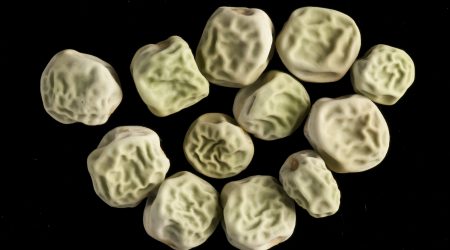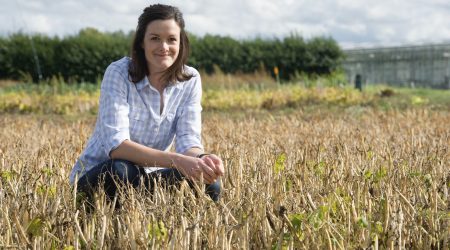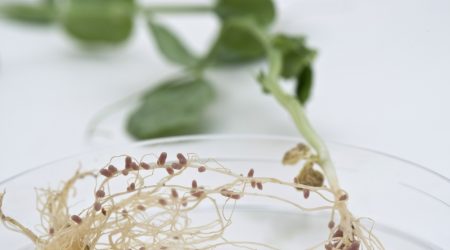William Bateson pioneered the science of genetics in Britain and became the first director of the John Innes Institute in 1910
He gathered around him a group of enthusiastic young scientists to tackle the challenges of inheritance in plants, aiming to apply Mendelian theory to breed new varieties to benefit both genetic research and agriculture.
The early research on pea at the John Innes Institute was predominantly conducted by Bateson, Caroline Pellew, Aslaug Sverdrup and Dorothea de Winton, with the latter three continuing the research after Bateson’s death in 1926.
Women scientists and early pea research
At the turn of the 20th century, despite completing university degrees, women were still very much excluded from the scientific community and did not have the same access to college fellowships or studentships that enabled their male peers to kick-start their careers in science.
The new discipline of genetics offered a route into science for women, since it was not as dominated by established male hierarchies.
William Bateson was a supporter of equal rights and played a crucial role in creating the possibility of an academic career for would-be female scientists. Quickly, an active and distinguished group of women scientists began to arise within Bateson’s team and they set about investigating the laws of inheritance in various organisms including pea.
Bateson arranged that Studentships (£250 per year) and Minor Studentships (£50-£100 per year) would be offered to both men and women. This was particularly unusual for a scientific institute during this period.
The large numbers of female scientists at the John Innes Institute was unusual and was not met with full acceptance by some staff members.
C.D. Darlington became the third director of the John Innes Institute in 1939, at the start of WW2, having joined the John Innes Institute in 1923. Archives reveal Darlington’s dislike of the female scientists, as well as a lack of appreciation for their work.
Changes were implemented throughout the Institution. Mostly attributable to a reduction in income as a result of the war, Darlington felt a change was needed and seized the opportunity to ‘move on’ the remaining ‘Bateson’s Ladies’.
A poem by Brenhilda Schafer about Darlington’s reorganisation of the John Innes Institute describes how the men were given the higher positions and more money, while the women were given the ‘toss’. Pellew and de Winton were the last to leave in 1941 when they were forced to take ‘voluntary retirement’, marking the end of the early era of pea research.
It can be argued that Darlington undervalued the work conducted by ‘Bateson’s Ladies’, suggesting that the John Innes Institute women primarily carried out breeding experiments designed by others.
However, it is evident from their achievements that this was not the case; Bateson’s women can be considered innovators in their own right, with Pellew and de Winton leading pea research following Bateson’s death in 1926.
Between them, Pellew and de Winton published numerous papers on rogues, types and linkage in pea, thereby paving the way for the successful legacy of pea research at the John Innes Institute.
Female scientists at John Innes ‘now’
Nowadays, gender equality has moved on significantly at the John Innes Centre. Approximately, 49% of our staff members, 57% of our postgraduate researchers and 44% of our Researchers are female.
The John Innes Centre was also the first independent research institute in the UK to win an Athena Swan Gold Award, in October 2017, which recognises commitment to gender equality in Science, Technology, Engineering, and Mathematics (STEM).




